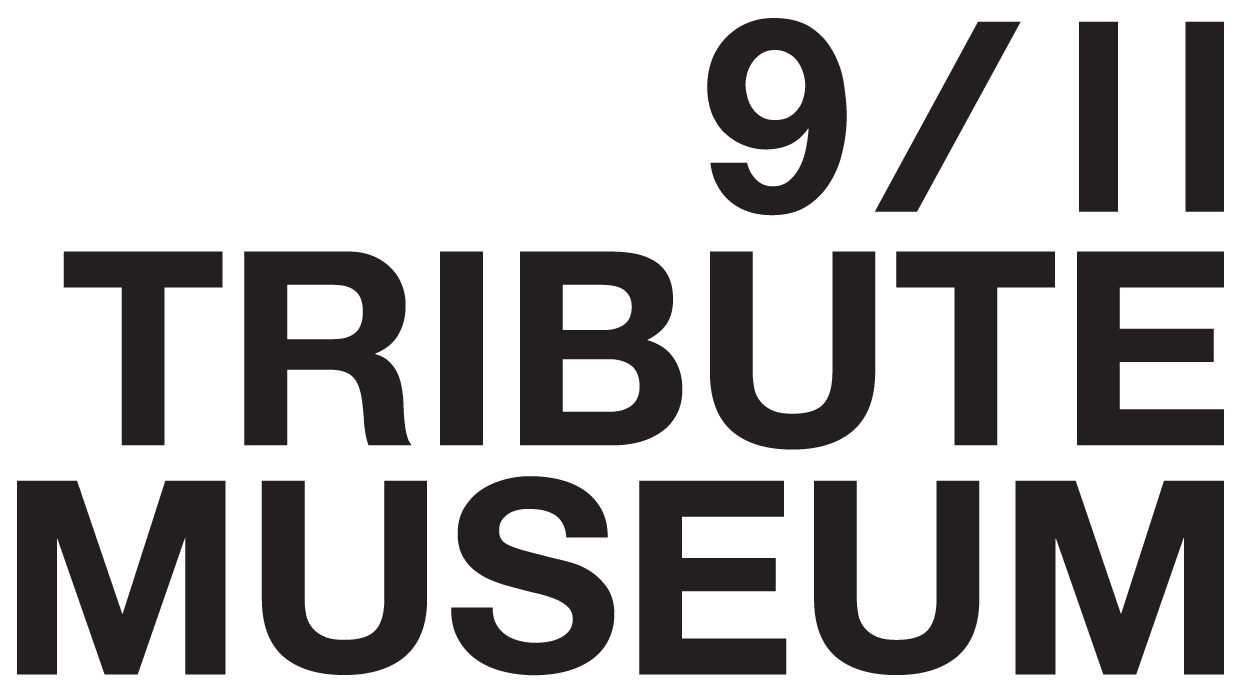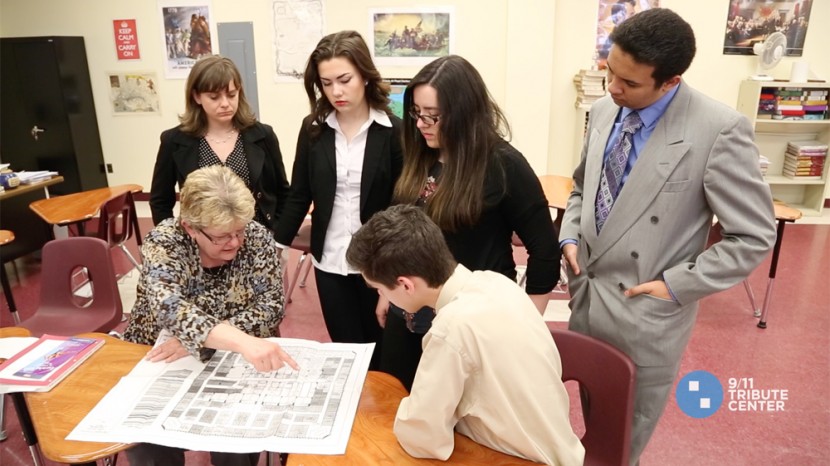What can we learn from studying September 11th that is applicable to our future?
Students are deeply curious about this event that took place before their lifetime. While students want to know more, many teachers and parents may be frightened about confronting this somber history without appropriate material to provide to their students.
The goal of these resources is to provide middle and high school teachers with primary resource classroom materials that introduce the personal impact of September 11th. These 8 story units reveal inspiring examples of how individuals have been transformed by this tragic event to dedicate themselves to generously serving others.
What does September 11th teach?
Unspeakable horror
- A major foreign attack on civilians on U.S. soil resulting
in thousands of deaths - Escalating violence and fear in many parts of the
world resulting in increased measures for national and
international security
Unprecedented humanity
- Dedication of those who put themselves in harm’s way to
help others - Extraordinary cooperation; “everyone was a New Yorker”
- Recovery from loss through volunteerism and new sense of civic responsibility
- New appreciation of our global interconnectedness
Global understanding and education is key to stopping violence
- Urgency to encourage tolerance, empathy and compassion
for people of different backgrounds through education
Recording and sharing history
- Examination of how history is constructed – the value
and limitations of learning from oral histories
How to use these resources
Each of the eight story units is supported by activities that will deeply enrich your students’ interaction with this material.
Between Part 1 and Part 2 of each film, students are asked to reflect upon a thoughtful question relating to the video and unit.
Please familiarize yourself with the Connect & Reflect Activity. Accompanying each story unit there are 5 facts and students are asked to connect the story to its historic context. Sometimes questions direct students to connect this history to the choices that they make in their own lives. This activity should be assigned after watching both parts of the video. Students can answer the questions individually or the questions can be used in a teacher-led class discussion.
Classroom & Service Projects offer a rich assortment of projects/assignments for your class or for individual students. We hope your students will take advantage of
some of these very unique opportunities.
Research Resources provide links and resources for your students to conduct a deeper investigation of this material, while Biographies provides more in-depth information about the person in the story unit. Definitions are provided to help students understand the meaning of certain terms within this specific context.
The Timeline of events and Map provide chronological and geographical context and orientation throughout this toolkit.
Introductory Exercise
Since September 11th is contemporary history and continues to be part of all of our lives, teachers should introduce the topic by asking students about their own connections to the events. Allow students to share their personal experiences related to the events and aftermath of September 11th, as well as those of their families and friends. Each related experience can be added to a class “timeline of events” and can be used to map out the total chronological experience of the class. Below are some suggested questions to pose to the students:
- What happened on September 11, 2001?
- What was your personal experience regarding the attacks on September 11th? How did you learn about what had happened that day? What about your family and friends?
- Did the aftermath of these attacks personally affect your family or friends in any way? What was their experience?
- As a teacher, were you teaching on September 11, 2001? How did you discuss this with your students at the time?
Share your personal experiences.
If your class time is limited, you can divide your class into smaller groups and each group can be assigned to complete one unit. Each group can report back to the class summary points that they discovered about their unit. As this is available online, students can be assigned to work on these units individually as a homework assignment, either at home or at the library. Each story unit video (Parts 1 & 2 combined) is between 4 and 10 minutes long.
Learning Standards
Historical Thinking Standards
Standard 1 – Student thinks chronologically.
Standard 3 – Student engages in historical analysis and interpretation.
Standard 4 – Student conducts historical research.
Standard 5 – Student engages in historical issues-analysis, decision-making.
United States History
Era 10, Standard 1C – Major foreign policy initiatives
Era 10, Standards 2B – New immigration and demographic shifts
Era 10, Standard 2C – Changing religious diversity and its impact on American institutions
Era 10, Standard 2E – How a democratic policy debates social issues and mediates between individual and group rights
World History
Era 9, Standard 2B – Economic interdependence has transformed human society
Era 9, Standard 2C – Liberal democracy, market economies, human rights movements have reshaped political/social life
Era 9, Standard 2D – Sources of tension and conflict in the contemporary world and efforts to address them
Era 9, Standard 2F – Worldwide cultural trends of the second half of the 20th century
Era 9, Standard 3A – Major global trends since World War II
Era 10, Standard 1 – Long-term changes and recurring patterns in world history
National Standards for Civics & Government
I. What is the relationship of the United States to other nations and to world affairs? What are the roles of the citizen in American democracy?
English/Language Arts Standards
Standard 1 – Read a wide range of print/non-print texts to build an understanding.
Standard 3 – Apply a wide range of strategies to comprehend, interpret, evaluate, and appreciate texts.
Standard 7 – Conduct research, generating ideas and questions, posing problems, gather, evaluate, and synthesize data from a variety of sources, communicate discoveries.
Standard 8 – Use a variety of technological and information resources (e.g., libraries, databases, computer networks, video) to gather and synthesize information and create and communicate knowledge.
Standard 12 – Use spoken, written, and visual language to accomplish their purposes.
Share Your Experience
If you have found this toolkit useful in teaching 9/11 to your students, or have developed lessons on any aspect of the 9/11 story, please share your classroom experiences with us:
- How did you integrate the study of September 11th into your overall curriculum?
- Can you share your students’ concluding thoughts after interacting with these materials? In what ways were they affected by this material?
- What suggestions do you have for other teachers on how to use these resources?
- Did your students do any of the community service projects or create their own? Please share these experiences.
- How did you find out about these materials?
Email us at education@911tributemuseum.org, and please include your name, school, grade level, and the subject you teach. We would love to hear from you! And don’t forget to apply for our Annual Teacher Awards program, were we honor teachers who create exemplary educational projects that help students understand the impact of 9/11. Awardees receive a Certificate of Merit at a formal ceremony held at the 9/11 Tribute Museum, and a monetary gift for their school donated by a 9/11 family foundation. Learn more.

